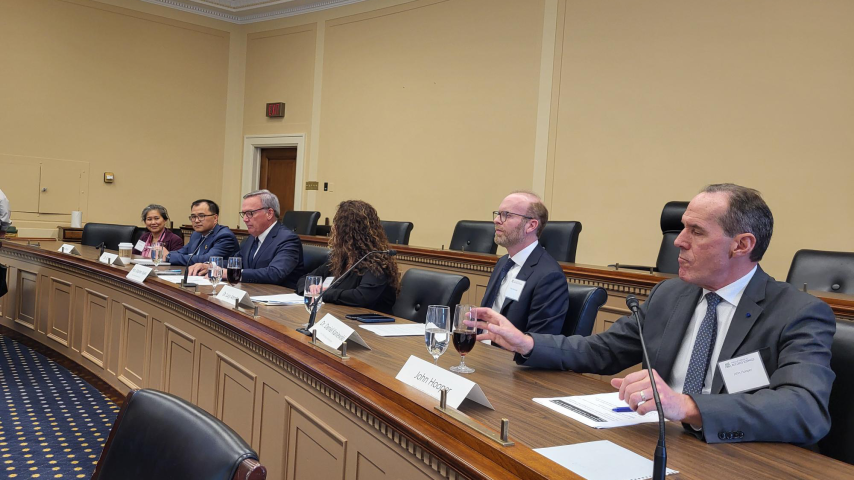Building Innovation: Who Gets Your Vote for the 2024 Future Leaders Award?

Nearly half of Americans live and work in high seismic regions throughout the United States. These regions currently have $108 trillion of national building assets.
The work of the National Earthquake Hazards Reduction Program (NEHRP) helps mitigate risk to these buildings and our communities.
Separately, windstorms are responsible for 60% of the nation’s total damage from natural disasters. Human and economic recovery from these events can take years – possibly decades. The negative impacts from windstorm damage will only increase as “Tornado Alley” creeps eastward, making future risk mitigation from the work of the National Windstorm Impact Reduction Program (NWIRP) crucial.
Both program reauthorizations – NEHRP and NWIRP – expired in September 2023 and 2018, respectively.
The built environment urges Congress to pass the reauthorization of NEHRP and NWIRP with increased funding to the National Institute of Standards and Technology (NIST) and Federal Emergency Management Agency (FEMA) for critical activities like functional recovery, existing building retrofit design, and lifeline infrastructure standards, as described in the 2011 NRC Report and the NEHRP Strategic Plan.
On March 7, the National Institute of Building Sciences and industry partners hosted a Congressional briefing at the Rayburn House Office Building to speak with representatives and make an appeal for reauthorization of these programs.
“Building on the successes in seismic design building codes over the past 40 plus years, we now have the science to build communities that recover rapidly after disasters,” said NIBS Interim President & CEO Stephen T. Ayers. “The implementation must be intentional.”
Protecting the Nation Through Prevention and Preparedness
NEHRP and NWIRP rely on the nation’s experts to conduct applied and basic research and share cutting-edge knowledge with community stakeholders. The programs enable our nation’s security and prosperity through prevention, preparedness, response, and recovery.
“I’ve seen what happens when communities aren’t prepared and haven’t mitigated,” said Dr. Lucy Arendt, professor with St. Norbert College and Chair of the NEHRP Advisory Committee on Earthquake Hazards Reduction, during the briefing. “People are displaced from their homes. Schools are closed. Businesses shutter. There’s a lot of trauma.”
Arendt said investment in knowledge, time, and money prior to a severe disaster is significantly less than the cost to help communities recover from a major threat.
Daniel Kaniewski, a former FEMA deputy administrator and member of the NIBS Multi-Hazard Mitigation Council, said the term “hazard mitigation” is just a “fancy way of saying strengthen the built environment.”
“There is a resilience gap between where we are today and where we should be as a resilient nation,” Kaniewski said. “I saw firsthand the collapse of infrastructure. These are things you might not see because it’s buried underground. But without water and power, that community cannot recover. Lifeline infrastructure needs to be restored quickly and efficiently.”
Investing in Resilience
While there has been forward momentum in the investment in the nation’s resilience, NIBS and our subject matter experts at the briefing point out that no one entity can do this alone.
NEHRP is led by NIST, which helps coordinate activities with three other program agencies – FEMA, U.S. Geological Survey, and National Science Foundation. Likewise, NWIRP is led by NIST, which works with FEMA, NSF, and the National Oceanic and Atmospheric Administration.
Both NEHRP and NWIRP provide important guidelines, best practices, and direction for the nation’s trillion-dollar investments in buildings and infrastructure. Unfortunately with an annual budget of less than $10 million, FEMA and NIST cannot afford to address critical resilience innovations identified in the 2021 Congressionally directed study.
John Hooper, a National Academy of Engineering member and leader in building code and standard development, said the agencies have worked together, each with its own specialty.
“NEHRP reduces the risk of life and property from future earthquakes,” Hooper said. “Without it, we wouldn’t be where we are today. NEHRP is essential, and there’s more work to do.”
For years, NIBS has studied the benefits and costs of hazard mitigation. View the findings of the Natural Hazard Mitigation Saves report and our Lifeline Infrastructure Hub, a public-private partnership to assist the nation with community resilience and recovery after disasters.